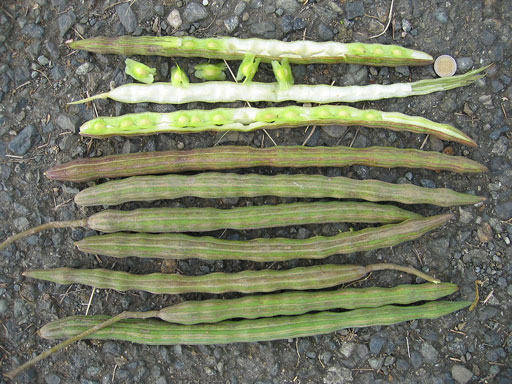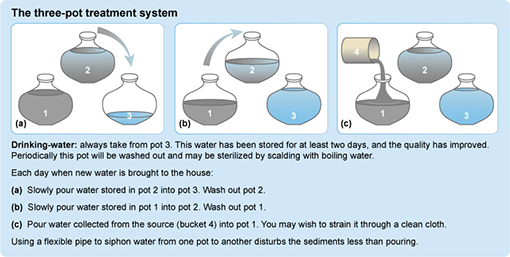10.2 Methods of household treatment of water
What is sedimentation?
Sedimentation is the removal of suspended solids through the settling of particles.
Just as in the water treatment works, if the water is turbid (muddy), then giving it time to settle (become calm) helps in sedimentation. This process can be assisted by adding a coagulant that encourages the formation of larger, heavier particles (flocculation) that then settle easily to the bottom of the container and make the water clear. At the household level, natural coagulants can be used such as the crushed, dry seeds of the Moringa fruit, shown in Figure 10.3 (Davis and Lambert, 1995). Moringa fruit comes from Moringa trees, which grow in tropical countries

Can you name one of the coagulants used in large-scale water treatment?
As you learned in Study Session 5, Section 5.2.3, aluminium sulphate and ferric chloride are used as coagulants in large-scale water treatment.
After the suspended particles have settled, the clear water at the top can be carefully poured into another container for further processing. The three-pot method is one method of sedimentation.
The three-pot method
The three-pot method (Figure 10.4) is a means of reducing dirt and micro-organisms in water, by storing the water in a container, allowing the dirt to settle, and moving the cleaner water to different containers over time. Water in a container should be allowed to settle for a day before it is decanted into the next container. Only water from Pot 3 should be consumed. The three-pot system is low-cost, easy to use and is something people can do themselves. However, it does not totally remove disease-causing micro-organisms, so some method of disinfection is still needed to remove the risk of disease completely.
10.1 Methods of safe household water collection

